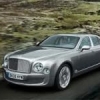Turbo Vehicles And What Could Have Been...
Announcements
-
Similar Content
-
Latest Posts
-
Still got the afm on the intake, clamps are shut tight, only loose hose is the one that goes from the j pipe towards the IACV, since it's next to impossible to find a factory hose and the barbs are different sizes (I'm still using clamps on this hose to try and help it seal on the iacv side) I've ordered parts to make up the hotside of the intercooler pipes, I'll plumb it in and see what happens in a few days I suppose The turbo's internally gated, can I just unscrew the tension rod to let the gate open?
-
By drifter17a · Posted
Does power steering have a cooler? pump is right next to the pump and as I understand r34 hicas is electric so unsure why all that loop going to driver side from the pump where the pump is on passenger side( uk based) Below seems to replace the entire hosing with this kit https://www.jdmgarageuk.com/jdmgarageuk-power-steering-line-kit-for-rwd-nissan-skyline-r32-r33-r34-silvia-s13-s14-s15.html?gad_source=1&gbraid=0AAAAAqLt7fNuZgXNepjqk8I-qovXgmJCu&gclid=Cj0KCQiA_9u5BhCUARIsABbMSPtHrfTutOf0ROkDV6lb7BQO-dqh2AMpqlyvTw7ncRMMkHjDIICIoA8aAiaZEALw_wcB -
Cobbers and Bullets were 1 cent each when I was a youngster
-







Recommended Posts
Create an account or sign in to comment
You need to be a member in order to leave a comment
Create an account
Sign up for a new account in our community. It's easy!
Register a new accountSign in
Already have an account? Sign in here.
Sign In Now